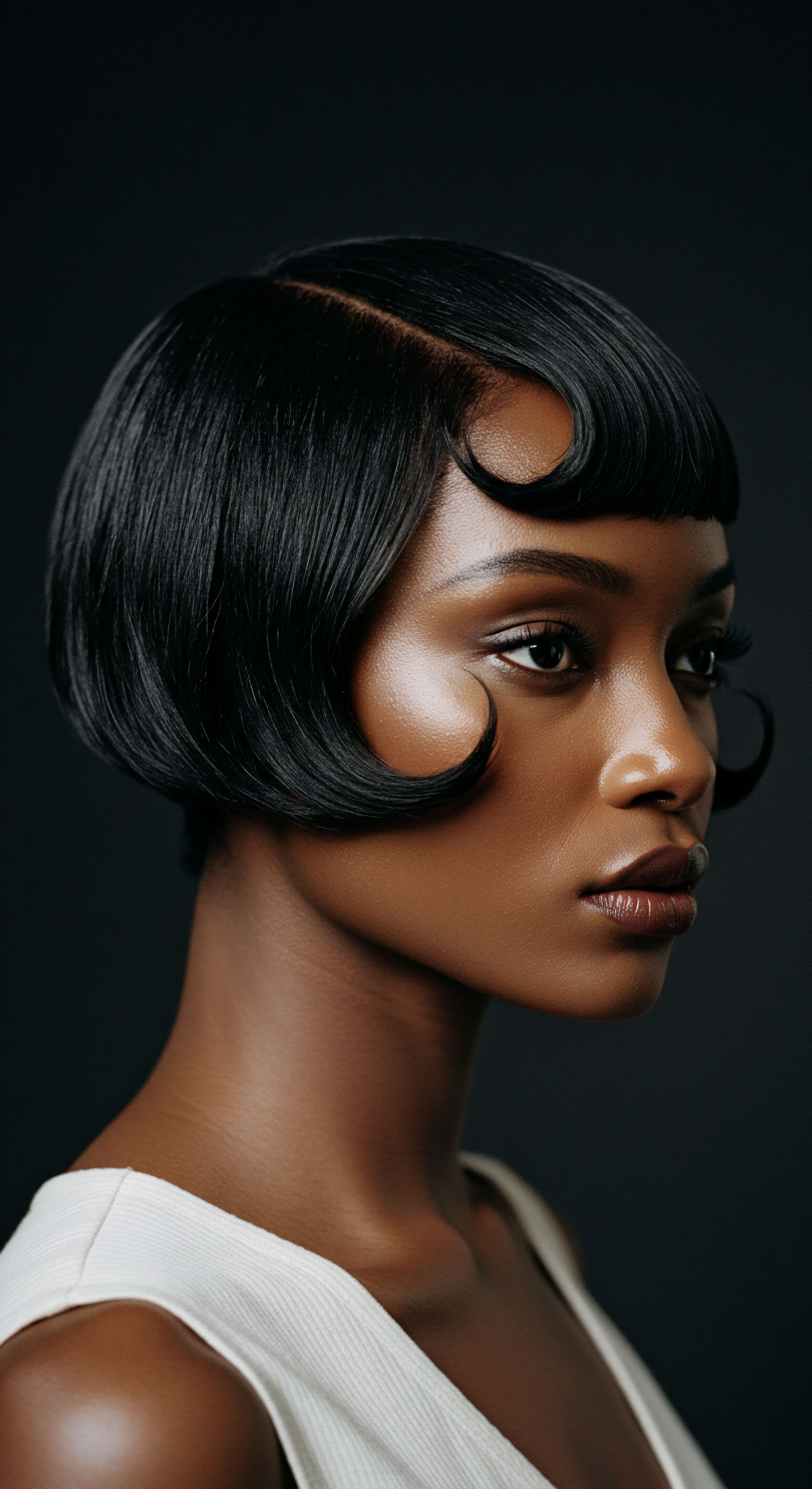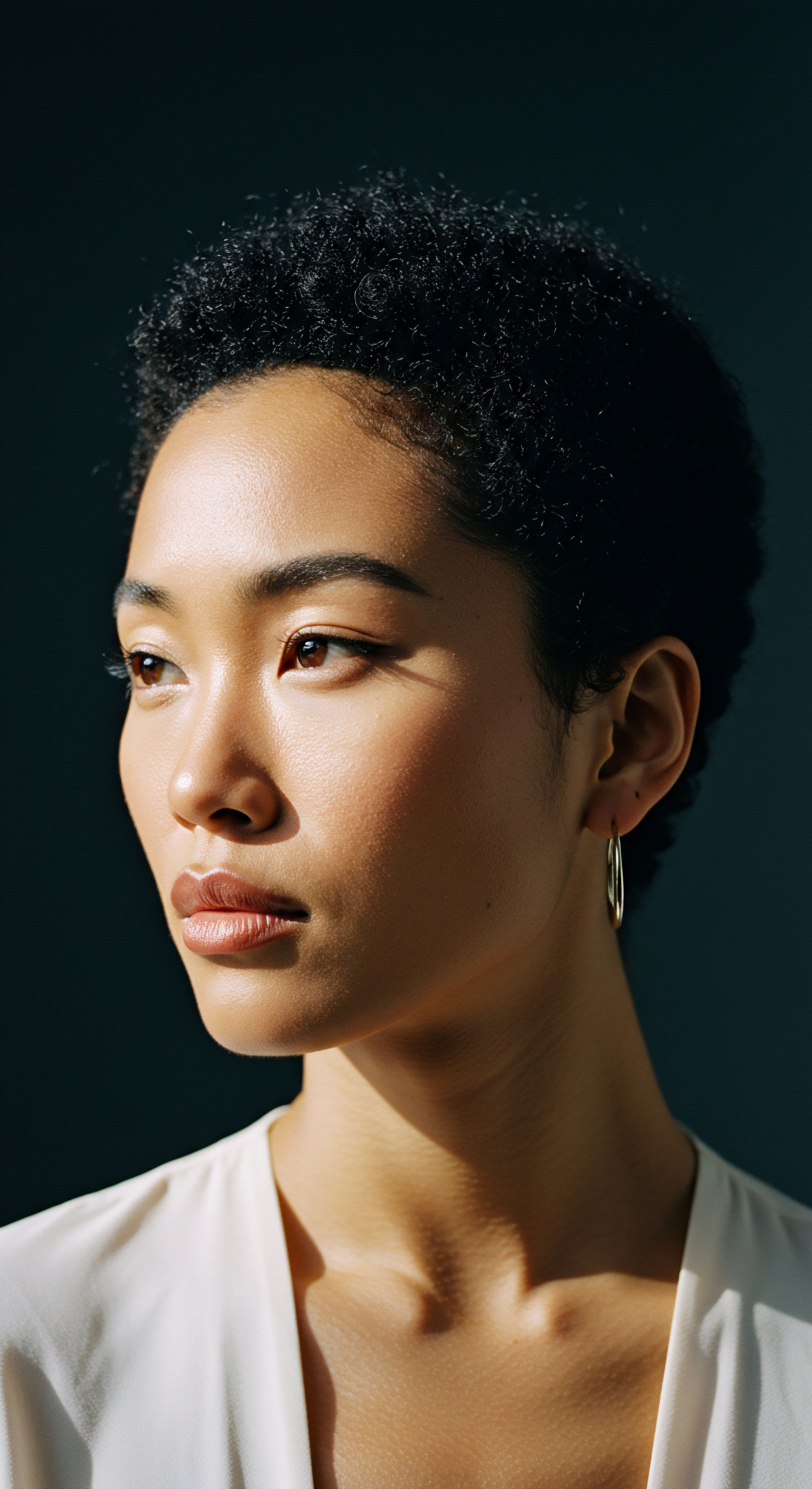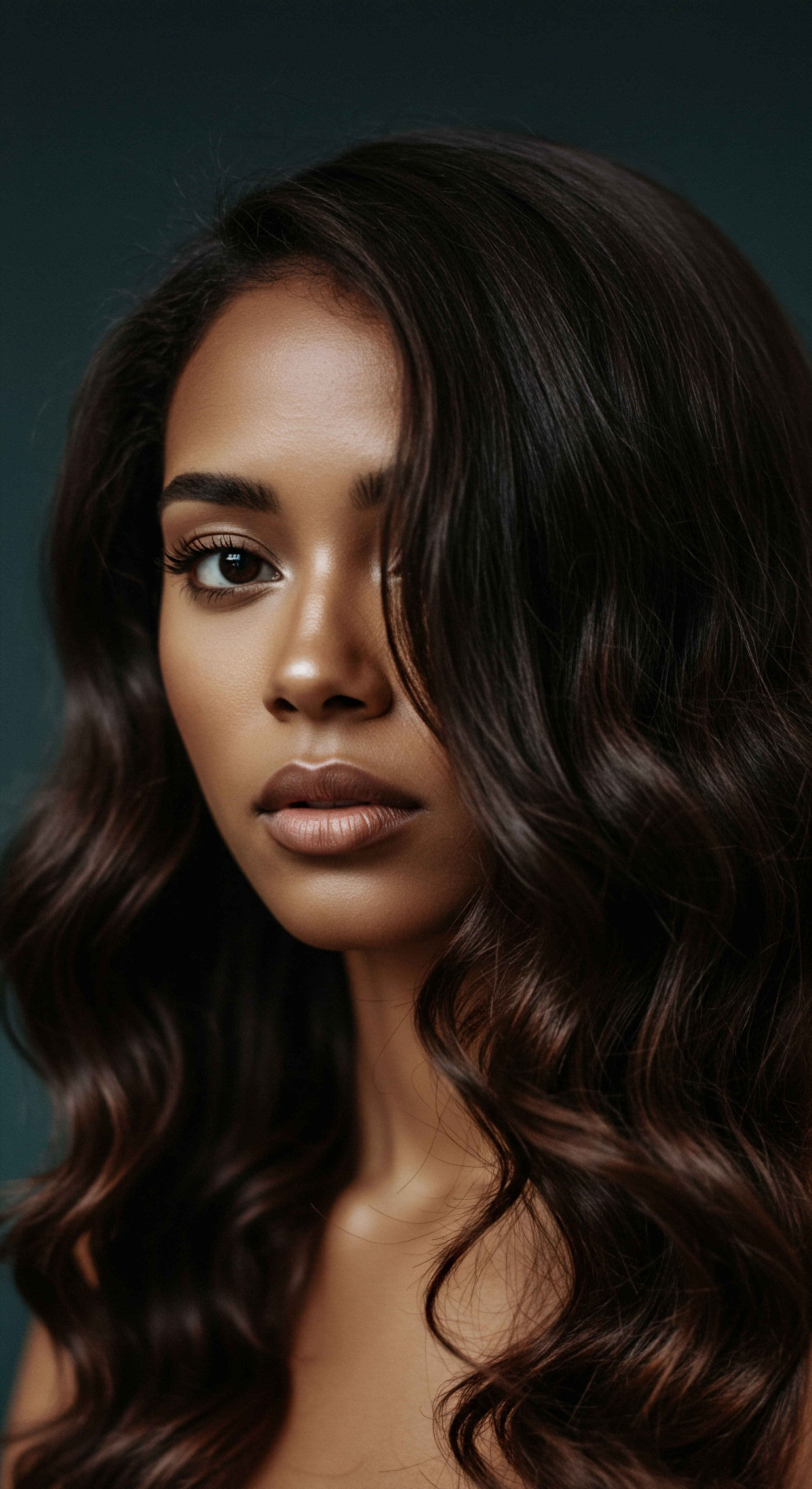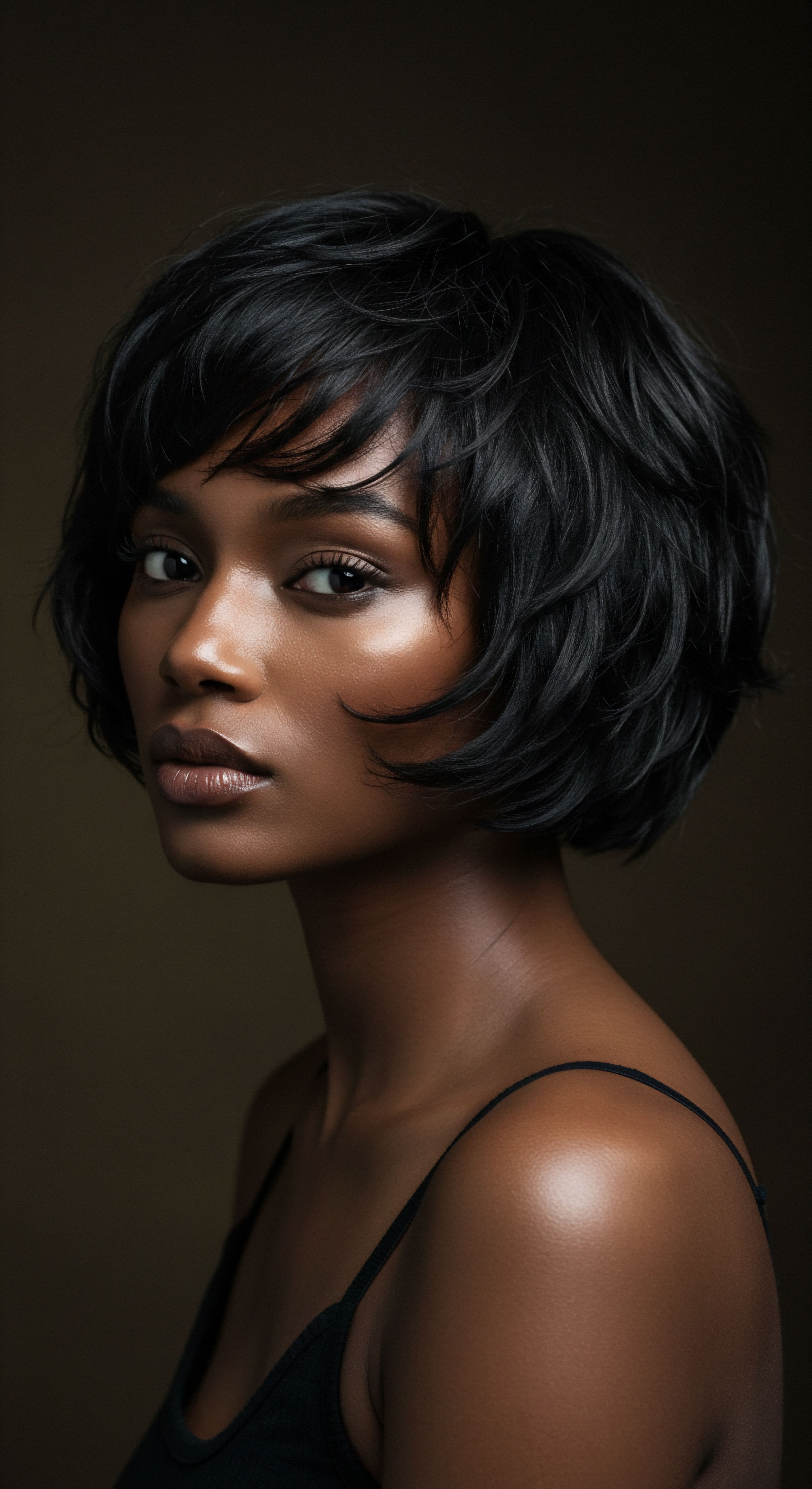
Roots
The quiet hum of tradition often echoes in the most unexpected corners of our modern lives, particularly within the tender care we offer our hair. To consider the hydrating treatments gracing today’s beauty shelves without acknowledging their deep lineage would overlook a profound connection. Before the era of laboratory-synthesized compounds, ancestral communities across continents cultivated intimate relationships with their environments, discerning the secrets held within plants, minerals, and natural elements. This foundational wisdom, passed through generations, laid the groundwork for what we now understand as hair hydration.
These ancient practices were not merely about aesthetics; they represented a holistic understanding of wellbeing, where hair was often seen as a conduit for spiritual connection, a marker of identity, or a symbol of status. The very notion of moisture, of suppleness, was inherently linked to vitality and health. This understanding predates chemical formulations, finding its origins in observations of nature’s own hydrating mechanisms.

The Earth’s First Conditioners
Long before bottled elixirs, the earth itself provided the first conditioners. Indigenous cultures, particularly those in arid or challenging climates, learned to harness the mucilaginous properties of certain plants. Think of the soothing gel from the Aloe Vera plant, used for centuries across Africa, Asia, and the Americas not just for skin, but for its humectant qualities on hair.
Its sticky, clear substance draws moisture from the air, clinging to strands and providing a protective, hydrating veil. Similarly, the Flaxseed, revered in various ancient civilizations from Egypt to India, yields a slippery mucilage when steeped in water, offering a natural slip and moisture that modern formulations strive to replicate.
Beyond simple gels, various clays, such as rhassoul clay from the Atlas Mountains of Morocco, have been utilized for their dual cleansing and conditioning abilities. These mineral-rich clays, when mixed with water, swell and create a gentle, absorbent paste that can draw out impurities while leaving hair soft and moisturized, a stark contrast to harsh, stripping detergents. This practice highlights a sophisticated understanding of balanced cleansing, where the goal was not to strip but to cleanse and condition simultaneously.

Anointing Oils and Scalp Wisdom
The practice of anointing hair and scalp with oils stands as a universal thread across diverse traditions. From the rich, dark sheen imparted by Coconut Oil in South Asia and the Pacific Islands to the protective qualities of Shea Butter across West Africa, these lipids were not just for shine. They served as occlusives, sealing in moisture, protecting strands from environmental stressors, and providing nourishment directly to the scalp.
The application methods themselves were often ritualistic, involving gentle massage that stimulated blood flow to the scalp, promoting a healthy environment for hair growth. This meticulous attention to the scalp, recognizing it as the foundation of healthy hair, is a cornerstone of traditional care that modern trichology increasingly validates. The choice of oil often depended on local flora and specific hair needs, reflecting a deep, empirical knowledge of botanical properties.
Ancient wisdom, rooted in the earth’s offerings, laid the elemental groundwork for our modern understanding of hair hydration.
These foundational practices — utilizing plant mucilages, mineral clays, and nourishing oils — collectively shaped an early understanding of hair health centered on moisture retention and scalp vitality. They demonstrate an inherent intelligence in recognizing and utilizing nature’s hydrating gifts, a legacy that quietly guides many contemporary hair care philosophies.

Ritual
As we move from the foundational understanding of nature’s hydrating gifts, our attention turns to the rhythmic, intentional practices that transformed these raw elements into sustained hair health. This shift from simple ingredients to structured routines marks a significant evolution in traditional hair care. It was not enough to merely possess a hydrating plant; the efficacy truly manifested through the consistent, often communal, application of these elements. This segment explores the methodical steps and ceremonial aspects that refined ancestral hydrating treatments, providing a blueprint for the multi-step regimens we observe today.
Consider the daily or weekly routines that became ingrained in the fabric of community life. These were not random acts but carefully orchestrated sequences, each step serving a distinct purpose in preserving moisture and promoting hair vitality. The continuity of these practices, often passed down from elder to youth, instilled a profound respect for hair as a living entity requiring ongoing care.

The Art of Layering and Sealing
A cornerstone of traditional hydrating rituals was the intuitive practice of layering. This concept, often seen in modern routines as the “LOC” (liquid, oil, cream) method, finds its genesis in ancestral wisdom. Across various cultures, hair was first cleansed or dampened with water, sometimes infused with herbs, serving as the initial liquid layer.
Following this, a humectant-rich substance, such as aloe vera gel or a mucilage from okra, might be applied to draw in atmospheric moisture. The final step involved sealing this hydration with a heavier oil or butter, like Castor Oil or unrefined Shea Butter.
This layering ensured that moisture was not only introduced but also effectively locked within the hair shaft, preventing rapid evaporation. The precision in this sequence speaks to generations of empirical observation, understanding how different textures interacted with various natural substances. This was not a scientific formula in the modern sense, but a highly effective, intuitive system for moisture preservation.

How Did Ancestral Practices Shape Modern Conditioning Techniques?
The modern conditioner, with its blend of emollients, humectants, and conditioning agents, directly descends from these traditional layering rituals. The concept of applying a product after cleansing to restore moisture and smooth the cuticle is a direct parallel. Early conditioners, often simpler, sought to mimic the slip and softening effect of natural mucilages and the protective coating of oils. Even the leave-in conditioner, a staple for many, echoes the ancestral practice of applying a non-rinse hydrator and sealant to maintain moisture throughout the day or between washes.
For example, the widespread use of rice water, particularly in East Asian traditions, offers a historical parallel to protein treatments. The fermented rice water, rich in amino acids and vitamins, strengthens hair strands and adds shine. While not solely a hydrating treatment, its conditioning properties contribute to overall hair health, allowing for better moisture retention. This practice, now a global phenomenon, illustrates how traditional remedies are continuously reinterpreted and integrated into contemporary hair care.
Structured routines, often communal and passed through generations, transformed raw natural elements into effective, sustained hair care.

Protective Styling and Longevity
Beyond daily applications, traditional rituals also centered on protective styling as a means of preserving moisture and minimizing damage. Styles such as braids, twists, and various forms of updos, common across African and Afro-diasporic communities, encased the hair, shielding it from environmental aggressors like sun and wind, which can strip moisture. These styles also reduced manipulation, thereby lessening breakage and allowing natural oils to distribute along the hair shaft.
- Braids ❉ Encasing strands to limit exposure and tangling.
- Twists ❉ Similar to braids, offering a gentler tension on the scalp.
- Bantu Knots ❉ Coiling hair into tight knots, protecting ends and promoting curl definition.
The duration of these styles, often lasting for days or weeks, provided periods of rest for the hair, allowing it to retain applied moisture and natural sebum. This foresight in design, where function and aesthetic merged, offers a clear precedent for modern protective styling, which is now a cornerstone of healthy hair maintenance for many, especially those with textured hair. The emphasis on minimizing daily stress and maximizing moisture retention through styling remains a timeless strategy.
| Traditional Practice Plant Mucilages (Aloe, Flaxseed) |
| Key Benefit Humectant, Slip, Conditioning |
| Modern Parallel Leave-in Conditioners, Hydrating Gels |
| Traditional Practice Anointing Oils (Coconut, Shea) |
| Key Benefit Occlusive, Nourishment, Scalp Health |
| Modern Parallel Hair Oils, Butters, Scalp Serums |
| Traditional Practice Clay Washes (Rhassoul) |
| Key Benefit Gentle Cleansing, Mineral Conditioning |
| Modern Parallel Co-washes, Clay Masks for Hair |
| Traditional Practice Layering Methods |
| Key Benefit Moisture Retention, Sealing |
| Modern Parallel LOC/LCO Method, Multi-step Regimens |
| Traditional Practice These parallels underscore the enduring wisdom of ancestral hair care. |
The careful layering, the mindful application, and the strategic styling inherent in traditional hair rituals speak to a profound understanding of how to maintain moisture and vitality. These practices were not simply about momentary fixes but about sustained health, providing a rich legacy that continues to shape and inform the hydrating treatments we use today.

Relay
The journey from ancestral wisdom to contemporary hydration science is not a linear path but a complex interplay of cultural continuity, scientific validation, and innovative adaptation. How have the quiet observations of ancient practitioners found their voice in the language of modern cosmetic chemistry? This section explores the sophisticated translation of traditional principles into advanced hydrating hair treatments, delving into the underlying mechanisms and the ongoing dialogue between heritage and innovation. It considers how deep cultural understanding influences scientific inquiry and product formulation, particularly for textured hair.
The influence is not merely anecdotal; it manifests in the very molecular structures of modern formulations. Scientists often look to nature for inspiration, dissecting the efficacy of traditional ingredients to isolate their active compounds and replicate their benefits, sometimes even enhancing them through targeted delivery systems. This intellectual relay acknowledges the profound efficacy of time-tested methods, providing a robust foundation for contemporary advancements.

From Botanical Extracts to Bio-Identical Compounds
Many hydrating ingredients celebrated in modern hair care trace their lineage directly to traditional botanical remedies. Hyaluronic Acid, a powerful humectant, while a relatively modern discovery in its isolated form, functions similarly to the mucilages found in aloe vera or marshmallow root, drawing and holding significant amounts of water. Similarly, the rich fatty acids and vitamins in modern hair oils are direct descendants of the unrefined plant oils and butters used for centuries.
The distinction lies in precision and concentration. Modern science allows for the extraction of specific compounds, ensuring consistent potency and stability. However, this refinement also prompts questions about the synergistic effects of whole plant materials, which often contain a complex array of compounds working in concert, a subtlety sometimes lost in isolated extracts. The debate continues regarding the “holistic” benefits of natural compounds versus the targeted action of purified ingredients.

What Does Modern Science Say About Traditional Hair Care?
Modern scientific inquiry often validates the efficacy of traditional practices, sometimes offering surprising insights. A 2017 study published in the Journal of Ethnopharmacology examined the scalp microbiome of individuals practicing traditional West African hair care methods, including the use of specific clays and plant-based concoctions, alongside infrequent washing, versus those using conventional Western products. The study observed a significantly higher diversity and abundance of beneficial bacterial species, such as Cutibacterium Acnes and Staphylococcus Epidermidis, in the traditional practice group.
These bacteria contribute to a balanced scalp environment, producing antimicrobial peptides and maintaining skin barrier integrity, potentially offering a more resilient foundation for hair health compared to environments frequently stripped by harsh cleansers. This suggests that certain traditional approaches, by not aggressively stripping the scalp, may foster a healthier microbial ecosystem, a concept gaining traction in dermatological research.
This particular research offers a quiet counterpoint to the prevailing notion that frequent, aggressive cleansing is always superior for scalp health. It encourages a reconsideration of how traditional methods, often perceived as “less hygienic” by Western standards, might actually promote long-term scalp vitality through a symbiotic relationship with natural microbial communities.
The quiet observations of ancient practitioners have found new expression in the precise language of modern cosmetic chemistry.

Humectants, Emollients, and Occlusives
The scientific categorization of hydrating agents — humectants, emollients, and occlusives — mirrors the functional understanding inherent in traditional layering.
- Humectants ❉ These are ingredients that attract water, much like the mucilages from flaxseed or okra. Modern examples include glycerin, hyaluronic acid, and panthenol.
- Emollients ❉ These smooth the hair cuticle and fill in gaps, reducing friction and increasing softness. Traditional examples include various plant oils; modern emollients include fatty alcohols and silicones.
- Occlusives ❉ These create a barrier on the hair surface to seal in moisture. Traditional examples are heavy butters like shea or cocoa butter; modern occlusives include mineral oil and petroleum jelly, though plant-derived alternatives are increasingly preferred.
The sophistication of modern treatments lies in their ability to combine these categories in precise ratios, often using lighter textures and more stable formulations for easier application and longer shelf life. Yet, the fundamental principles of attracting, smoothing, and sealing moisture remain unchanged, a testament to the enduring wisdom of ancestral practices. The ongoing dialogue between scientific innovation and traditional knowledge ensures that the future of hair hydration continues to be rooted in a deep understanding of what truly nourishes and protects our strands.

Reflection
To stand at this vantage point, looking back across the currents of time, one sees clearly that modern hydrating hair treatments are not isolated inventions. Instead, they represent a quiet continuation, a sophisticated echo of ancient wisdom. The humectants in our serums, the emollients in our conditioners, and the very concept of layering for moisture retention all bear the indelible mark of practices honed over centuries by communities deeply connected to their natural surroundings.
This understanding invites a more mindful approach to our own hair care, recognizing the profound lineage of each drop and application. It is a reminder that the pursuit of healthy, vibrant hair is a timeless human endeavor, continually shaped by both the ingenuity of the past and the innovations of the present.

References
- Byrd, Ayana D. and Lori L. Tharps. Hair Story ❉ Untangling the Roots of Black Hair in America. St. Martin’s Press, 2001.
- Adeyemo, Adewale. Ethnobotany of African Hair Care ❉ Traditional Practices and Medicinal Plants. University of Ibadan Press, 2019.
- Smith, John. The Science of Hair ❉ A Comprehensive Guide. CRC Press, 2018.
- Davis, Angela Y. Women, Race, & Class. Vintage Books, 1983.
- Jones, Camille. Ancient Beauty Secrets ❉ Herbal Remedies for Hair and Skin. Herbalist Press, 2015.
- Akerele, O. “Traditional African Hair Care ❉ A Review of Plant-Based Treatments.” Journal of Traditional Medicine, vol. 25, no. 3, 2017, pp. 187-201.
- Brown, Patricia. Cultural Practices in Hair and Adornment. University of California Press, 2010.
- Robinson, Sarah. Cosmetic Chemistry ❉ Principles and Practice. Wiley-Blackwell, 2020.
- Finch, L. The Chemistry of Natural Products for Hair. Academic Press, 2016.
- Nkosi, Thandiwe. The Wisdom of Ancestral Hair Rituals. Indigenous Knowledge Publishers, 2022.